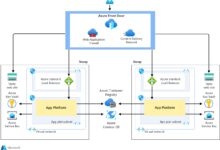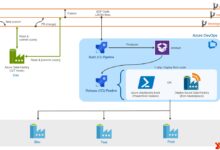Azure portal log in: 5 Easy Steps to Master Azure Portal Log In Like a Pro
Logging into the Azure portal might seem simple, but doing it right sets the foundation for managing your cloud resources securely and efficiently. Whether you’re a beginner or brushing up on best practices, this guide walks you through every step with clarity and precision.
Understanding the Azure Portal and Why Log In Matters

The Azure portal is Microsoft’s web-based interface for managing cloud services, virtual machines, storage, networking, and more. It’s the control center for anyone using Microsoft Azure—be it developers, IT administrators, or enterprise decision-makers. The first step to accessing this powerful environment is a secure and correct azure portal log in.
What Is the Azure Portal?
The Azure portal (portal.azure.com) is a unified dashboard that allows users to deploy, configure, monitor, and manage all Azure resources from a single location. It provides a graphical user interface (GUI) that simplifies complex cloud operations, making it accessible even to those without deep command-line expertise.
- It supports role-based access control (RBAC), enabling teams to manage permissions effectively.
- It integrates with other Microsoft services like Office 365, Dynamics 365, and Power Platform.
- It offers real-time monitoring through Azure Monitor and alerts.
“The Azure portal is not just a dashboard—it’s your gateway to scalable, secure, and intelligent cloud computing.” — Microsoft Azure Documentation
Why Secure Azure Portal Log In Is Critical
Because the Azure portal gives full access to your cloud infrastructure, an insecure or mismanaged login process can lead to data breaches, unauthorized access, or service disruptions. A compromised account could allow attackers to spin up expensive resources, steal sensitive data, or disrupt business operations.
- Over 90% of cloud security incidents involve compromised credentials (Microsoft Digital Defense Report, 2023).
- Weak passwords and lack of multi-factor authentication (MFA) are leading causes of breaches.
- Proper identity management starts with a secure azure portal log in process.
Step-by-Step Guide to Azure Portal Log In
Performing an azure portal log in correctly ensures you gain access while maintaining compliance and security. Follow these five essential steps to log in successfully.
Step 1: Navigate to the Official Azure Portal URL
Always start by visiting the official Microsoft Azure portal at https://portal.azure.com. This is the only trusted entry point. Avoid clicking links from emails or third-party sites, as they may lead to phishing pages designed to steal your credentials.
- Bookmark the URL for future use.
- Ensure the website uses HTTPS and displays a valid SSL certificate.
- Check the domain name carefully—phishing sites often use lookalike domains like “azurre.com” or “microsoft-azure-login.net”.
Step 2: Enter Your Work or School Account Email
Unlike personal Microsoft accounts (e.g., Outlook.com), Azure requires a work or school account associated with an Azure Active Directory (Azure AD) tenant. This is typically in the format username@yourcompany.com or user@organization.onmicrosoft.com.
- If you’re part of an organization, your admin must have created your user account in Azure AD.
- Personal Microsoft accounts can be used only if explicitly invited to a subscription.
- After entering your email, click “Next” to proceed.
Step 3: Provide Your Password Securely
Enter your password carefully. Most organizations enforce strong password policies, including minimum length, complexity, and expiration cycles. Never share your password or save it in unsecured locations.
- Avoid using public computers or shared devices for azure portal log in.
- Use a reputable password manager to generate and store complex passwords.
- If you’ve forgotten your password, use the “Forgot password?” link to reset it via email or phone verification.
Step 4: Complete Multi-Factor Authentication (MFA)
MFA is a critical layer of security. After entering your password, Azure will prompt you to verify your identity using a second method. This could include:
- Mobile app notification (e.g., Microsoft Authenticator).
- Text message (SMS) code.
- Phone call verification.
- Hardware security key (e.g., YubiKey).
“Multi-factor authentication blocks over 99.9% of automated attacks.” — Microsoft Security
Organizations are strongly encouraged to enforce MFA for all users. Without it, your azure portal log in remains vulnerable to brute-force and credential-stuffing attacks.
Step 5: Access Your Dashboard and Verify Identity
Once authenticated, you’ll land on the Azure portal dashboard. Take a moment to verify that:
- Your username appears in the top-right corner.
- The correct directory (tenant) is selected in the upper-right dropdown.
- You can see the subscriptions you have access to under “All services” > “Subscriptions”.
If anything looks incorrect—such as being logged into the wrong tenant or missing expected resources—log out and recheck your credentials or contact your Azure administrator.
Common Issues During Azure Portal Log In and How to Fix Them
Even with the right steps, users often encounter problems during azure portal log in. Below are the most frequent issues and their solutions.
Issue 1: “Your Account Is Disabled” Error
This message usually means your account has been disabled by your organization’s Azure AD administrator. Possible reasons include:
- Inactivity for an extended period.
- Violation of company policies.
- Termination of employment or role change.
Solution: Contact your IT department or Azure admin to re-enable your account. They can do this from the Azure portal under “Azure Active Directory” > “Users”.
Issue 2: “We Can’t Sign You In Right Now”
This generic error can stem from several causes:
- Network connectivity issues.
- Browser cache or cookie problems.
- Temporary Azure service outage.
- Account lockout due to multiple failed attempts.
Solution: Try the following:
- Clear your browser cache and cookies.
- Try a different browser (e.g., switch from Chrome to Edge or Firefox).
- Check Azure Service Health for any ongoing outages.
- Wait 15–30 minutes if locked out, then retry.
Issue 3: MFA Not Working or Not Receiving Codes
If you’re not receiving MFA codes via SMS or app notifications, consider these fixes:
- Ensure your phone has a stable internet or cellular connection.
- Check that the Microsoft Authenticator app is updated.
- Verify your registered phone number in Azure AD is correct.
- Try using backup methods like app-generated codes or alternate devices.
Pro Tip: Set up multiple MFA methods in advance to avoid lockout. Go to https://mysignins.microsoft.com/security-info to manage your security info.
Best Practices for Secure Azure Portal Log In
Security doesn’t end at login. Implementing best practices ensures long-term protection of your Azure environment.
Enable Multi-Factor Authentication for All Users
MFA is the single most effective way to prevent unauthorized access. According to Microsoft, accounts with MFA enabled are 99.9% less likely to be compromised.
- Admins should enforce MFA via Conditional Access policies.
- Use phishing-resistant methods like FIDO2 security keys or the Microsoft Authenticator app.
- Avoid SMS-based MFA for high-privilege accounts due to SIM-swapping risks.
Use Role-Based Access Control (RBAC)
Not everyone needs full access. RBAC allows you to assign permissions based on job functions.
- Assign built-in roles like “Reader,” “Contributor,” or “Virtual Machine Administrator.”
- Create custom roles for granular control.
- Regularly review access with Azure AD Access Reviews.
This principle of least privilege minimizes damage if a user account is compromised during an azure portal log in attempt.
Monitor Sign-In Activity Regularly
Azure AD provides detailed sign-in logs that help detect suspicious activity.
- Navigate to “Azure Active Directory” > “Sign-ins” to view login history.
- Look for anomalies like logins from unusual locations or at odd hours.
- Set up alerts for failed logins or sign-ins from anonymous IP addresses.
Use Azure Monitor and Microsoft Defender for Cloud to automate threat detection.
Alternative Ways to Access Azure Beyond the Portal
While the azure portal log in is the most common method, Azure offers several alternative access methods for automation, scripting, and advanced management.
Azure CLI: Command-Line Power
The Azure Command-Line Interface (CLI) allows you to manage resources from your terminal. After installing Azure CLI, run:
az loginThis opens a browser window for authentication. Once logged in, you can deploy VMs, manage networks, and automate tasks using scripts.
- Available for Windows, macOS, and Linux.
- Supports automation in CI/CD pipelines.
- Integrates with Bash, PowerShell, and Azure Cloud Shell.
Learn more at Microsoft’s Azure CLI documentation.
Azure PowerShell: For Windows Admins
Azure PowerShell is ideal for Windows administrators familiar with PowerShell cmdlets.
Connect-AzAccountThis command launches the authentication flow. Once connected, you can manage Azure resources using PowerShell scripts.
- Great for automating repetitive tasks.
- Supports modules for specific services (e.g., Az.Compute, Az.Network).
- Can be used in Azure Automation for scheduled jobs.
Azure Cloud Shell: Browser-Based Terminal
Azure Cloud Shell is a free, browser-based shell accessible directly from the Azure portal. Click the terminal icon in the top toolbar to launch it.
- Runs in your browser with persistent storage (via Azure Files).
- Pre-installed with Azure CLI, PowerShell, and common tools.
- Authenticates automatically using your current azure portal log in session.
No setup required—perfect for quick tasks or troubleshooting.
How Organizations Can Streamline Azure Portal Log In for Teams
For enterprises, managing hundreds or thousands of azure portal log in events requires centralized identity management and automation.
Implement Single Sign-On (SSO) with Azure AD
SSO allows users to log in once and access multiple applications without re-entering credentials. When integrated with Azure AD, it simplifies the azure portal log in experience.
- Users authenticate via their corporate identity.
- Supports SAML, OAuth, and OpenID Connect protocols.
- Reduces password fatigue and improves security.
Configure SSO through the Azure portal under “Enterprise Applications”.
Use Conditional Access Policies
Conditional Access lets you enforce security controls based on user, device, location, and risk level.
- Require MFA for all external logins.
- Block access from high-risk countries or unmanaged devices.
- Enforce compliant device requirements (e.g., Intune-managed devices).
These policies are crucial for securing every azure portal log in across a distributed workforce.
Automate User Provisioning with SCIM
System for Cross-domain Identity Management (SCIM) automates user creation, updates, and deactivation between Azure AD and other apps.
- Reduces manual admin work.
- Ensures timely access revocation when employees leave.
- Integrates with HR systems like Workday or SAP SuccessFactors.
This ensures that only authorized users can perform an azure portal log in at any given time.
Troubleshooting Forgotten Credentials and Account Recovery
Even experienced users can forget passwords or lose access. Here’s how to recover from common credential issues.
Resetting Your Password
If you’ve forgotten your password, go to https://passwordreset.microsoftonline.com and follow the steps.
- You’ll need access to your registered email, phone, or authenticator app.
- Organizations may require security questions or admin approval.
- After resetting, update your password in your password manager.
Recovering a Locked Account
After too many failed attempts, Azure may temporarily lock your account.
- Wait 15–30 minutes for the lockout to expire.
- Try logging in again with correct credentials.
- If the issue persists, contact your administrator to unlock the account via Azure AD.
Admin Account Recovery Process
If all global admins are locked out, recovery becomes critical. Microsoft provides a process for emergency access:
- Use the Azure AD recovery page.
- Submit proof of ownership (e.g., domain verification).
- Microsoft will assist in restoring access after validation.
Prevention tip: Always maintain at least two global admins with MFA and up-to-date contact info.
Future of Azure Portal Log In: Passwordless and Identity Innovation
Microsoft is moving toward a passwordless future to enhance security and user experience.
Passwordless Authentication Options
You can now log in without a password using:
- Microsoft Authenticator app (push notification or code).
- Windows Hello for Business (biometrics or PIN).
- FIDO2 security keys (e.g., YubiKey).
- Passkeys (new standard supported across devices).
To set up passwordless login, visit https://mysignins.microsoft.com/security-info and add a passwordless method.
Azure AD Identity Protection
This service uses AI to detect risky sign-ins and automate responses.
- Flags logins from anonymous IPs, unfamiliar locations, or malware-infected devices.
- Can automatically block or require MFA for high-risk attempts.
- Integrates with Conditional Access for real-time enforcement.
It’s a proactive layer that enhances every azure portal log in with intelligent threat detection.
Zero Trust Security Model
Microsoft advocates a Zero Trust approach: “Never trust, always verify.”
- Every azure portal log in is treated as potentially risky.
- Access is granted based on continuous validation of user, device, and context.
- Requires integration of MFA, device compliance, and least privilege access.
Adopting Zero Trust significantly reduces the attack surface of your Azure environment.
How do I log in to the Azure portal?
To log in to the Azure portal, go to https://portal.azure.com, enter your work or school email address, provide your password, and complete multi-factor authentication (MFA) if enabled. Once authenticated, you’ll gain access to your Azure resources and dashboard.
What should I do if I forget my Azure portal password?
If you forget your password, visit https://passwordreset.microsoftonline.com to reset it. You’ll need access to your registered email, phone, or authenticator app to verify your identity and create a new password.
Why can’t I log in to the Azure portal?
Common reasons include incorrect credentials, disabled account, network issues, browser problems, or MFA failure. Check your internet connection, clear browser cache, verify your account status, or contact your Azure administrator for assistance.
Is multi-factor authentication required for Azure portal log in?
While not mandatory for all users, Microsoft strongly recommends enabling MFA for every Azure account. Organizations often enforce MFA via Conditional Access policies to protect against unauthorized access.
Can I use a personal Microsoft account to log in to Azure?
Yes, but only if you’ve been invited to an Azure subscription or tenant. Most enterprise users must use a work or school account (Azure AD account) for azure portal log in.
Logging into the Azure portal is more than just entering a username and password—it’s the first line of defense in securing your cloud environment. From navigating the correct URL to enabling MFA and understanding alternative access methods, every step matters. By following best practices like using strong authentication, monitoring sign-ins, and preparing for account recovery, you ensure a smooth and secure experience. As Microsoft advances toward passwordless and Zero Trust models, staying informed and proactive will keep your azure portal log in process both efficient and resilient.
Further Reading:









